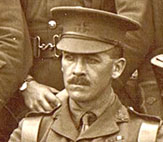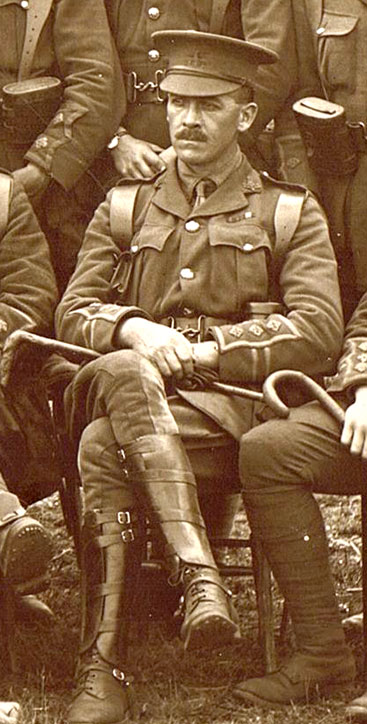 |
Remembrance
- The Yorkshire Regiment, First World War Captain Harold CHAPMAN Close window to return to main page |
 |
 .
.
The above photo of Captain Harold Chapman is taken from the photo of Officers
of the 6th Battalion in 1915.
Harold CHAPMAN
Private Harold Chapman. 646232. 7th Battalion Canadian Infantry.
Son of Mr. J. J. Chapman, of 17, St. Hilda's Terrace, Whitby, Yorks; husband
of Irene Lethbridge Chapman, of Tarafal, Crowthorne, Berks, England. Served
in the South African Campaign with B.S.A. Police. Served at Gallipoli, 1915,
with rank of Maj. (acting Col.). Invalided back to British Columbia, 1916.
Killed 15 August 1917. Aged 39.
Harold Chapman joined a Rhodesia regiment for the Boer War, then went to Canada to farm. Like his brother (Wilfred Chapman) he came home to the UK in 1914. Also, like his brother, he joined their uncle's regiment, - the 6th Battalion the Yorkshire Regiment. The uncle to Harold and Wilfred was Lieutenant Colonel Edward Chapman.
The three Chapmans landed with the 6th Battalion at Mudros Bay on 10 July
1915, - Lieutenant Colonel Edward Chapman, Captain Harold Chapman,
and Captain Wilfred Chapman.
The 6th Battalion was in action at Suvla Bay on 6/7 August 1915, and in the
attack on Lala Baba both Colonel Edward Chapman and Captain Wilfred Chapman
were killed. They are both buried in Azmac Cemetery.
The official history does not mention Captain Harold Chapman in this action,
beyond mentioning that the entire Battalion Headquarters had been "knocked
out" within an hour of landing. Almost certainly, Captain Harold Chapman
would have been wounded on 6 August 1915.
However, from his Service Record (about which see later) there is mention of a scar 3 1/2" long on his right thigh, which may well be the wound he received at Gallipoli. But there is also mention of heart trouble ("soldier's heart", - allied to Rheumatic Fever?).
The official history then mentions that Major Harold Chapman was in the withdrawal of the 6th Battalion from Gallipoli on 14 December 1915. The battalion was moved to Imbros, where the official history states that Captain W R Peel assumed command in place of Major Harold Chapman who was admitted to hospital. (Probably because of his heart condition).
According to John Sly (<sly211@btinternet.com>) "Harold Chapman was badly wounded at Gallipoli and was refused any further involvement in the war by the War Office. He returned to Canada, joined the Canadian Expeditionary Force as a Private and was promoted to Sergeant. He was wounded at Vimy and killed when a shell hit the stretcher party taking him to the Casualty Clearing Station."
In 1987 John Sly (<sly211@btinternet.com>) was researching the medals awarded to Harold Chapman, and wrote a series of articles for the OMRS Journal at the time. The manuscript for these articles, which were published in the journal, can be read by selecting the link Research by John Sly into Harold Chapman.
Harold
Chapman's Service Record in the Canadian Infantry tells us more about
him.
He was born on 23 November 1876 at Goudhurst, Kent.
He enlisted in the Canadian Infantry on 9 October 1916 in Vancouver, B C.
He had a scar on his right thigh, and had "soldier's heart", but
this was said to be improving.
On 7 January 1917 he arrived in England and was posted to the 1st Battalion
Canadian Infantry at Shorncliffe Camp, where he was promoted to Acting Sergeant
on 26 January 1917.
On 25 April 1917 he was posted to the 7th Battalion for overseas service ,
and reverted to Private.
On 15 August 1917 he was posted as "Missing, believed killed", and
was later formally pronounced as killed on that date.
Harold Chapman is commemorated on the Vimy memorial, recorded as a Private.
--------------> Return to Top of Page